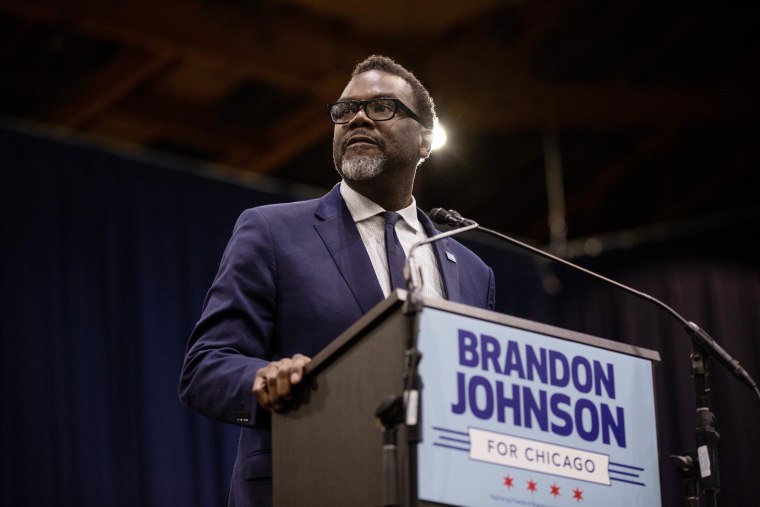Chicago voters will head to the polls Tuesday to elect a new mayor, choosing between two Democratic-leaning candidates.
The current mayor, Lori Lightfoot, failed to win enough votes to advance past the first round of voting in February. So Tuesday’s race features Cook County Commissioner Brandon Johnson, a progressive candidate, and the more-moderate former Chicago public schools chief, Paul Vallas.
The race has exposed fault lines within the Democratic Party, particularly on crime, as well as racial divides in the city as Johnson, who is Black, takes on Vallas, who is white.
Here are some key statistics about the race:
57: The number of mayors Chicago will have elected following Tuesday’s election. Lightfoot was the first Chicago mayor in 40 years to lose re-election, garnering only 17% of the vote.
About 33%: The percentage of votes Vallas received in the first round, failing to cross the 50% threshold necessary to avoid a runoff. This is the third consecutive Chicago mayoral runoff election since 2015.
About 22%: The percentage of votes Johnson received in the first round, qualifying for the runoff ahead of Lightfoot.
2: The number of times Vallas has run for mayor of Chicago. Vallas first ran for mayor back in 2019, garnering roughly 5% percent of the vote.
5: The number of U.S. representatives from Illinois who have endorsed Johnson for mayor, including Democrat Jesús “Chuy” García, who ran unsuccessfully for mayor.
$14 million: The amount that's been spent on ads since the first round of voting in February, according to the ad tracking firm AdImpact. It is nearly four times the amount spent in the 2019 runoff.
564,524: The number of votes cast in the first round of voting in February, the most for a mayoral election since the 590,733 votes cast in the 2015 runoff between former Chicago Mayor Rahm Emanuel and García.
About $21 million: The combined amount in contributions donated to Vallas and Johnson since the general election, according to the Illinois State Board of Elections. Vallas has received more than $13 million, loaning himself $200,200, while Johnson has received about $7 million.
79%: The percentage of majority-Latino precincts where Vallas performed better than Johnson in the first round. Vallas also performed better in 80% of precincts won by García, who performed best in areas of the city with predominantly Latino voters.
Nearly 92%: The percentage of majority-Black precincts where Johnson performed better than Vallas in the first round. Johnson also performed better in 92% of precincts won by Lightfoot, who performed best in areas of the city with predominantly Black voters.
Almost 71%: The percentage of the majority-white precincts won by Vallas in the first round. Vallas got his support from the politically moderate areas in northwestern Chicago as well as Near North Side, the most populous community area in the city.
28%: The percentage of majority-white precincts won by Johnson in the first round. Johnson received his support in the northeastern portion of the city such as Lincoln Square and Rogers Park, signaling his support amongst white progressives in the city.
